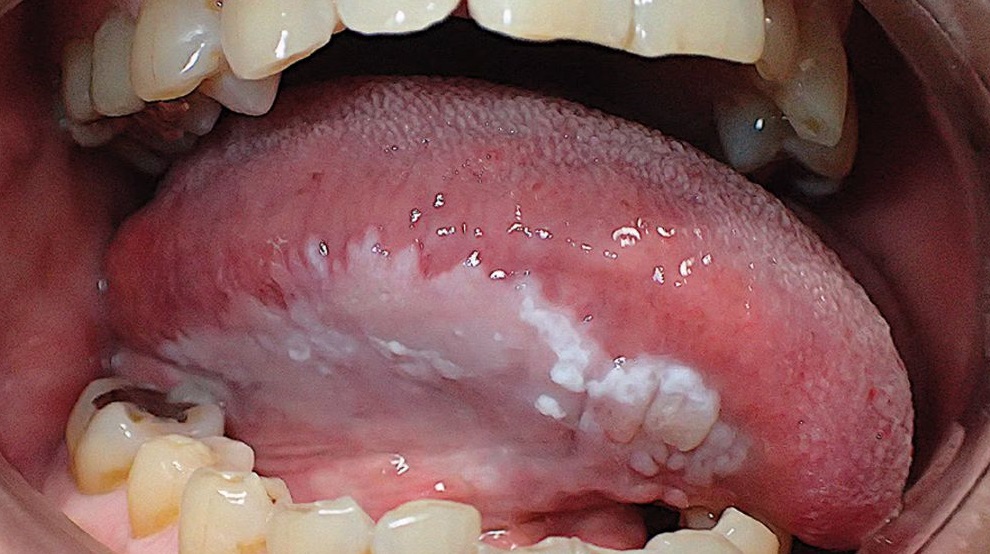

What Is Leukoplakia? Causes, Symptoms, Diagnosis, and Treatment
Leukoplakia is a condition characterized by white plaques that develop inside the mouth—commonly on the inner cheeks, gums, or the surface of the tongue. Although often harmless, leukoplakia may carry a precancerous potential, especially if left untreated. This article covers everything you need to know about leukoplakia—from its symptoms and causes to diagnosis, treatment, and prevention strategies.
What Is Leukoplakia?
Leukoplakia refers to thickened, white patches that form on the mucous membranes of the mouth. These patches cannot be scraped off by brushing or tongue cleaning. The condition arises due to abnormal cell growth in the oral tissues and is often linked to chronic irritation from factors such as tobacco use or alcohol consumption.
Common Symptoms of Leukoplakia
Leukoplakia usually develops painlessly, which can make early detection difficult. However, some signs and symptoms to look out for include:
-
White or gray plaques in the mouth
-
Redness or inflammation around the patches
-
Thickened or hardened areas on the mucosa
-
Mild discomfort or irritation (in some cases)
These lesions tend to persist over time and may enlarge if not treated.
What Causes Leukoplakia?
Leukoplakia is often caused by chronic irritation to the tissues in the mouth. Common risk factors include:
-
Smoking and tobacco use: The primary cause of leukoplakia. The heat and chemicals in tobacco products irritate the oral mucosa.
-
Alcohol consumption: Excessive alcohol can contribute to the development of mucosal damage.
-
Poor-fitting dentures: Dentures that do not fit properly can rub against the inner cheeks or gums, causing trauma.
-
Chronic mechanical trauma: Sharp teeth edges, habitual cheek biting, or rough dental work may lead to persistent irritation.
How Is Leukoplakia Diagnosed?
Diagnosis typically begins with a clinical oral examination by a dentist or oral surgeon. Suspicious white lesions are visually assessed. To confirm the diagnosis and rule out malignancy, a biopsy may be performed. This involves removing a small sample of tissue from the lesion for histopathological examination.
How Is Leukoplakia Treated?
The treatment for leukoplakia depends on the lesion’s size, location, and risk of turning into cancer. Common treatment approaches include:
-
Eliminating risk factors: Stopping tobacco and alcohol use, adjusting dental appliances, or treating mechanical trauma.
-
Surgical removal: If there’s a high risk of malignant transformation, the lesion may need to be surgically excised.
-
Cryotherapy: The lesion is frozen using liquid nitrogen and destroyed.
-
Laser therapy: Laser energy is used to remove the affected tissue safely and precisely.
How Can Leukoplakia Be Prevented?
To reduce the risk of developing leukoplakia, consider the following preventive measures:
-
Avoid tobacco products: Smoking or chewing tobacco significantly increases your risk.
-
Limit alcohol intake: Alcohol can irritate the oral tissues and make them more susceptible.
-
Maintain regular dental checkups: Early detection is key to successful treatment.
-
Practice good oral hygiene: Keeping your mouth clean reduces the chances of infections and irritation.
Does Leukoplakia Affect All Age Groups?
While leukoplakia can occur in individuals of any age, it is more common in adults over 40, especially those with a history of long-term tobacco use. It is rare in children.
How Does Leukoplakia Differ from Other Oral Lesions?
Leukoplakia is characterized by its white, thickened appearance, which does not scrape off easily. In contrast, aphthous ulcers (canker sores) are usually painful, shallow lesions with red borders. Leukoplakia tends to be painless and more persistent, with a thicker consistency.
What to Do After a Leukoplakia Diagnosis?
After a diagnosis, the lesion should be monitored regularly. If the lesion shows signs of change or poses a risk for cancer, treatment should begin promptly. Eliminating irritants such as smoking and alcohol, and maintaining optimal oral hygiene, is essential to prevent recurrence.
Conclusion
Leukoplakia is a potentially serious oral condition that, while often benign, can develop into oral cancer if left untreated. Understanding what leukoplakia is and how to manage it can help you maintain optimal oral health. Regular dental visits and good hygiene practices are key to early detection and effective treatment.
